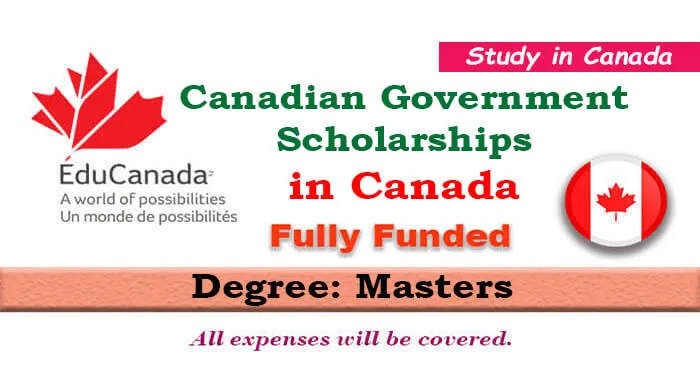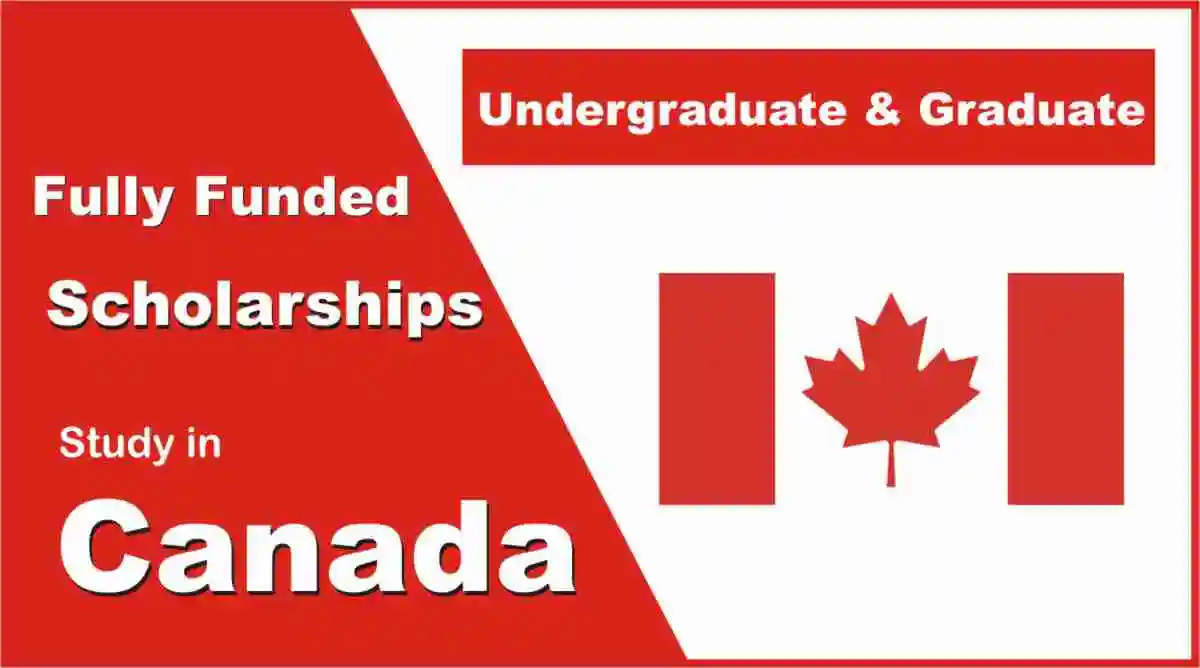Advertisements
Finding fully funded scholarships without an IELTS requirement can be a game-changer for international students looking to pursue their education abroad. While the International English Language Testing System (IELTS) is a widely recognized measure of English language proficiency, not all scholarship programs require it. Here’s an extensive guide on how to find and secure fully funded scholarships without an IELTS requirement:
1. Search for IELTS Waivers
To find IELTS waivers for international students seeking scholarships or admissions to universities, follow these steps:
- University Websites: Visit the websites of universities or colleges you are interested in attending. Look for their admissions or scholarship pages, as well as their English language proficiency requirements. Some institutions may offer waivers for applicants who meet certain criteria, such as completing previous education in English or achieving high scores on other language proficiency tests.
- Scholarship Portals: Explore scholarship portals or databases that list opportunities for international students. Use search filters to narrow down scholarships that do not require an IELTS score or offer waivers for English language proficiency. Websites like Scholarships.com, ScholarshipPortal.com, or Studyportals.com can be useful resources.
- Government Websites: Check the websites of government agencies or ministries of education in countries where you wish to study. Some governments offer scholarships for international students that may include waivers for English language proficiency tests like the IELTS.
- Contact Universities: If you find a scholarship or program you are interested in but are unsure about the IELTS requirements, reach out to the admissions office or scholarship coordinator at the university. They can provide information about any waivers or alternative language proficiency options available.
- Professional Organizations: Explore professional organizations or associations related to your field of study. They may offer scholarships or grants that do not require an IELTS score, particularly if the organization has ties to English-speaking countries or institutions.
- Online Forums and Communities: Join online forums or communities for international students where you can ask questions and seek advice from others who have gone through the scholarship application process. They may be able to share their experiences and recommend scholarships that offer IELTS waivers.
- Language Schools: Consider enrolling in language schools or English language programs that offer pathways to university admission without requiring an IELTS score. Some language schools have partnerships with universities and can provide recommendations or assistance with the admissions process.
- Consult with Educational Consultants: If you’re still having trouble finding IELTS waivers, consider consulting with educational consultants or agents who specialize in assisting international students. They may have insights into specific scholarship programs or universities that offer waivers based on your individual circumstances.
By utilizing these strategies and resources, you can identify scholarship opportunities and admissions pathways that do not require an IELTS score or offer waivers for English language proficiency. Remember to carefully review the eligibility criteria for each opportunity and prepare a strong application that showcases your qualifications and potential for success.
2. Explore Scholarships for Developing Countries
Exploring scholarships for students from developing countries can open up opportunities for individuals to pursue higher education and contribute to their communities’ development. Here are some avenues to explore when seeking scholarships tailored for students from developing countries:
- Government Scholarships: Many governments, especially those in developed countries, offer scholarships specifically for students from developing countries to study abroad. These scholarships often cover tuition fees, living expenses, and sometimes travel costs. Examples include the Australian Awards, the Chevening Scholarships in the UK, and the Fulbright Program in the United States.
- International Organizations: Organizations such as the United Nations, the World Bank, and the World Health Organization offer scholarships and fellowships for students from developing countries in various fields such as public health, agriculture, and sustainable development. These programs aim to build capacity and promote international cooperation.
- Non-Governmental Organizations (NGOs): NGOs focused on education, poverty alleviation, and human rights often provide scholarships for students from developing countries. These scholarships may target specific demographic groups, such as girls or refugees, and cover a range of educational levels from undergraduate to postgraduate studies.
- Foundations and Trusts: Many philanthropic foundations and trusts offer scholarships for students from developing countries. These organizations may have specific focus areas such as healthcare, engineering, or environmental conservation. Examples include the Gates Cambridge Scholarship and the Mastercard Foundation Scholars Program.
- University Scholarships: Universities around the world offer scholarships for international students, including those from developing countries. These scholarships may be funded by the university itself, alumni donations, or corporate sponsors. Some universities also have partnerships with governments or organizations to provide scholarships for students from specific countries or regions.
- Regional Scholarship Programs: Regional organizations such as the African Union, the Association of Southeast Asian Nations (ASEAN), and the Organization of American States (OAS) offer scholarships for students from member countries. These programs aim to promote regional integration and cooperation through education.
- Corporate Sponsorships: Some multinational corporations and companies offer scholarships for students from developing countries as part of their corporate social responsibility initiatives. These scholarships may be linked to specific fields of study relevant to the company’s operations, such as engineering or technology.
- Online Scholarship Databases: Explore online scholarship databases and search engines that specialize in listing scholarships for students from developing countries. These platforms allow users to filter scholarships by country, field of study, and eligibility criteria, making it easier to find relevant opportunities.
- Professional Associations: Professional associations in various fields, such as medicine, engineering, and business, often provide scholarships for students from developing countries to support their education and career development. These scholarships may include funding for conferences, workshops, or research projects in addition to academic studies.
- Embassy Scholarships: Some embassies and diplomatic missions offer scholarships for students from developing countries to study in their host countries. These scholarships may be funded by the host country’s government or private donors and may cover a range of academic disciplines.
When exploring scholarships for students from developing countries, it’s essential to carefully review the eligibility criteria, application requirements, and deadlines for each opportunity. Additionally, applicants should consider how their educational and career goals align with the scholarship’s objectives and how they can contribute to their home countries’ development upon completion of their studies.
3. Consider Non-English Speaking Countries
When exploring scholarships for students from non-English speaking countries, it’s crucial to consider opportunities that cater to individuals whose primary language of instruction may not be English. Here are some avenues to explore when seeking scholarships for students from non-English speaking countries:
- Government Scholarships: Many governments offer scholarships for students from non-English speaking countries to study abroad in English-speaking countries or in their home countries. These scholarships may include language preparation courses or exemptions from English language proficiency requirements. Examples include the Japan International Cooperation Agency (JICA) Scholarship and the Chinese Government Scholarship.
- Language Scholarships: Some scholarships specifically target students from non-English speaking countries to study English as a second language. These scholarships may cover language courses, English proficiency tests, and study materials to help students improve their language skills before pursuing higher education in English-speaking countries.
- Bilateral Agreements: Bilateral agreements between countries often include provisions for scholarships and exchange programs for students from non-English speaking countries. These agreements aim to promote cultural exchange and cooperation in education. Students can inquire with their home country’s government or embassy about available opportunities.
- Regional Scholarship Programs: Regional organizations and institutions may offer scholarships for students from non-English speaking countries within their geographic area. These programs may provide funding for study exchanges, research collaborations, or academic programs conducted in regional languages. Examples include the Arab Fund for Economic and Social Development and the African Union Scholarships.
- Foundation Scholarships: Philanthropic foundations and trusts may offer scholarships for students from non-English speaking countries to pursue higher education in various fields. These scholarships may cover tuition fees, living expenses, and travel costs. Examples include the Aga Khan Foundation Scholarship and the Ford Foundation International Fellowships Program.
- University Scholarships: Universities in non-English speaking countries may offer scholarships for international students, including those from non-English speaking countries. These scholarships may be available for undergraduate, master’s, and doctoral programs and may include language support services for students who need to improve their English proficiency.
- Professional Associations: Professional associations in specific fields may provide scholarships for students from non-English speaking countries to attend conferences, workshops, or training programs. These scholarships may cover registration fees, travel expenses, and accommodation costs.
- Cultural Exchange Programs: Cultural exchange programs facilitated by non-governmental organizations, international agencies, or educational institutions often provide scholarships for students from non-English speaking countries to study abroad. These programs aim to foster understanding and cooperation between different cultures and may include language immersion opportunities.
- Online Scholarship Databases: Explore online scholarship databases and search engines that list opportunities for students from non-English speaking countries. These platforms allow users to filter scholarships by country, field of study, and language requirements, making it easier to find relevant opportunities.
- Corporate Sponsorships: Some multinational corporations and companies may offer scholarships for students from non-English speaking countries as part of their corporate social responsibility initiatives. These scholarships may be linked to specific fields of study or industries relevant to the company’s operations.
When exploring scholarships for students from non-English speaking countries, it’s essential to carefully review the eligibility criteria, application requirements, and language proficiency requirements for each opportunity. Applicants should also consider how their educational and career goals align with the scholarship’s objectives and how they can contribute to their home countries’ development upon completion of their studies.
4. Network and Build Connections
5. Showcase Your Strengths
Showcasing your strengths effectively is essential when applying for scholarships, especially for students from non-English speaking countries. Here are some strategies to effectively highlight your strengths in scholarship applications:
- Identify Your Strengths: Take some time to reflect on your strengths, skills, achievements, and experiences. Consider both academic strengths (such as high grades, awards, and honors) and non-academic strengths (such as leadership, community service, and extracurricular activities).
- Tailor Your Application: Customize your scholarship application to highlight the strengths that are most relevant to the scholarship criteria and objectives. Carefully read the scholarship requirements and focus on showcasing strengths that align with the selection criteria.
- Provide Specific Examples: Instead of simply listing your strengths, provide specific examples and anecdotes that demonstrate how you have demonstrated these strengths in real-life situations. Use concrete examples, such as projects you have completed, initiatives you have led, or challenges you have overcome.
- Quantify Achievements: Whenever possible, quantify your achievements to provide context and demonstrate the impact of your strengths. For example, mention the number of hours you volunteered, the percentage increase in student participation in a club you led, or the results of a research project you conducted.
- Highlight Transferable Skills: Emphasize transferable skills that are relevant to the scholarship requirements and can be applied in various contexts. These may include communication skills, teamwork, problem-solving abilities, adaptability, and resilience.
- Focus on Personal Growth: Showcase how you have grown and developed as a result of your experiences and challenges. Highlight instances where you have stepped out of your comfort zone, taken on leadership roles, or learned from failure.
- Demonstrate Passion and Commitment: Show enthusiasm for your field of study, career goals, and the scholarship opportunity itself. Explain why you are passionate about your chosen field and how receiving the scholarship will help you achieve your goals.
- Highlight Diversity and Unique Perspectives: As a student from a non-English speaking country, you may bring unique perspectives, cultural insights, and experiences to the table. Highlight how your background and experiences contribute to diversity and enrich the academic community.
- Use Language Effectively: While English may not be your first language, strive to communicate your strengths clearly and effectively in your scholarship application. Proofread your application carefully for grammar, spelling, and punctuation errors, and consider seeking feedback from a trusted mentor or advisor.
- Be Authentic: Above all, be authentic and genuine in presenting your strengths in your scholarship application. Avoid exaggerating or embellishing your accomplishments, and focus on presenting a truthful and compelling narrative that reflects who you are and what you have to offer.
By showcasing your strengths effectively in your scholarship application, you can increase your chances of standing out to scholarship selection committees and securing the funding you need to pursue your academic and career goals. Remember to tailor your application to the specific requirements of each scholarship, provide specific examples and evidence to support your strengths, and communicate your passion, commitment, and unique perspectives effectively.
6. Apply Broadly
Applying broadly is a strategic approach that can increase your chances of securing scholarships, especially for students from non-English speaking countries. Here’s how to effectively apply broadly for scholarships:
- Research Multiple Opportunities: Cast a wide net by researching and identifying multiple scholarship opportunities that align with your academic interests, career goals, and personal background. Explore scholarships offered by governments, universities, foundations, corporations, and international organizations.
- Diversify Your Applications: Apply for scholarships with varying eligibility criteria, requirements, and selection criteria. Look for scholarships that consider factors such as academic achievement, financial need, leadership potential, community involvement, and specific demographic or cultural backgrounds.
- Consider Different Study Destinations: Explore scholarship opportunities in different countries and regions to increase your options. While scholarships in English-speaking countries may be prevalent, don’t overlook opportunities in non-English speaking countries or regions where you may qualify for funding based on your nationality or area of study.
- Apply for Multiple Scholarships Simultaneously: Once you have identified several scholarship opportunities, create a timeline and strategy for submitting your applications. Be proactive and start the application process early to avoid missing deadlines. Keep track of application requirements, deadlines, and submission instructions for each scholarship.
- Customize Your Applications: Tailor each scholarship application to meet the specific requirements and preferences of the scholarship provider. Customize your essays, personal statements, and letters of recommendation to reflect your fit with the scholarship’s objectives, values, and selection criteria. Highlight relevant experiences, achievements, and strengths that make you a strong candidate.
- Seek Feedback and Support: Before submitting your applications, seek feedback from mentors, advisors, teachers, or peers who can provide constructive criticism and suggestions for improvement. Review your application materials carefully for accuracy, clarity, and coherence. Consider revising and refining your applications based on feedback received.
- Prepare for Interviews and Assessments: Some scholarship programs may require applicants to participate in interviews, assessments, or additional evaluation activities as part of the selection process. Prepare thoroughly for these components by researching the scholarship provider, practicing interview questions, and showcasing your strengths and qualifications effectively.
- Stay Organized and Persistent: Keep track of all scholarship applications, deadlines, and communication with scholarship providers. Maintain a structured approach to managing your applications and follow up with scholarship providers as needed. Be persistent in pursuing scholarship opportunities and remain proactive in seeking additional funding options if needed.
- Consider Backup Plans: While applying broadly increases your chances of success, it’s essential to have backup plans in case you do not receive the desired scholarships. Explore alternative funding sources, such as student loans, part-time work, or crowdfunding platforms, to finance your education if necessary.
- Celebrate Achievements and Learn from Rejections: Celebrate your achievements and milestones throughout the scholarship application process, regardless of the outcome. If you receive scholarships, express gratitude and acknowledge the support you have received. If you face rejections, view them as opportunities for growth and learning. Request feedback from scholarship providers to understand areas for improvement and apply lessons learned to future applications.
By applying broadly for scholarships and adopting a proactive and strategic approach, you can maximize your chances of securing funding to support your academic aspirations and pursue your goals effectively. Remember to remain persistent, adaptable, and open-minded throughout the process, and celebrate your achievements along the way.
7. Secure Strong References
Securing strong references is crucial when applying for scholarships, particularly for students from non-English speaking countries. Here’s how to secure strong references for your scholarship applications:
Advertisements
- Choose Relevant Referees: Select referees who can speak to your academic abilities, personal qualities, and achievements relevant to the scholarship criteria. Consider professors, teachers, advisors, employers, supervisors, or community leaders who know you well and can provide detailed and positive recommendations.
- Build Relationships Early: Cultivate relationships with potential referees early on in your academic and professional journey. Attend office hours, participate actively in class discussions, volunteer for projects, and seek opportunities to collaborate with faculty members and mentors. Building strong relationships over time will increase the likelihood of securing strong references.
- Communicate Clearly: When requesting a reference, clearly communicate the purpose of the scholarship, the specific requirements, and the deadline for submission. Provide your referees with any necessary information, such as your resume, academic transcripts, and details about the scholarship program. Be polite, professional, and respectful in your communication.
- Provide Context and Guidance: Help your referees understand why you are applying for the scholarship and how it aligns with your academic and career goals. Provide context about your achievements, experiences, and strengths that you would like them to highlight in their recommendation letters. Offer guidance on the key points you would like them to address.
- Schedule a Meeting: If possible, schedule a meeting with your referees to discuss your scholarship application in person or via video call. Use this opportunity to share your aspirations, discuss your accomplishments, and explain why you believe you are a strong candidate for the scholarship. Answer any questions they may have and provide additional context as needed.
- Provide Ample Time: Give your referees ample time to write their recommendation letters by requesting references well in advance of the scholarship deadline. Respect their busy schedules and allow them sufficient time to craft thoughtful and personalized letters on your behalf. Remind them of the deadline and offer gentle reminders as the deadline approaches.
- Provide Supporting Materials: Supply your referees with relevant supporting materials that can strengthen their recommendation letters. This may include samples of your work, academic papers, certificates of achievement, or letters of appreciation. These materials can help your referees provide specific examples and evidence to support their endorsements.
- Follow Up Gratefully: After your referees have submitted their recommendation letters, express your gratitude for their support and assistance. Send a thank-you note or email to acknowledge their efforts and express appreciation for their time and support. Keeping your referees informed of the outcome of your scholarship application is also courteous.
- Maintain Professionalism: Maintain professionalism and integrity throughout the recommendation process. Avoid pressuring or excessively reminding your referees to submit their letters. Respect their autonomy and decision-making process, and refrain from influencing the content of their recommendations beyond providing guidance and context.
- Stay Connected: Stay connected with your referees beyond the scholarship application process. Keep them updated on your academic and professional achievements, seek their advice and mentorship as needed, and continue to nurture your relationships for potential future opportunities.
By following these steps and building strong relationships with your referees, you can secure compelling recommendation letters that enhance your scholarship applications and increase your chances of success. Remember to express gratitude for their support and maintain professionalism throughout the process.
8. Prepare for Interviews
Preparing for interviews is crucial when applying for scholarships, especially for students from non-English speaking countries. Here are some steps to effectively prepare for scholarship interviews:
- Research the Scholarship: Familiarize yourself with the scholarship program, its objectives, selection criteria, and requirements. Understand the organization offering the scholarship, its mission, and its values. Research past recipients and their experiences to gain insights into what the selection committee may be looking for.
- Understand Common Interview Questions: Anticipate common interview questions and prepare thoughtful responses in advance. Typical questions may focus on your academic achievements, career goals, leadership experience, community involvement, and personal qualities. Practice articulating your answers clearly and concisely.
- Highlight Your Strengths: Identify your key strengths, skills, and experiences that make you a strong candidate for the scholarship. Prepare examples and anecdotes to illustrate these strengths and demonstrate how they align with the scholarship’s objectives and selection criteria. Emphasize your unique perspectives and contributions as a student from a non-English speaking country.
- Practice Speaking English: If the interview will be conducted in English, practice speaking English fluently and confidently. Work on improving your pronunciation, vocabulary, grammar, and comprehension skills. Practice speaking with native English speakers, watching English-language films and TV shows, and listening to English-language podcasts or radio programs.
- Mock Interviews: Conduct mock interviews with friends, family members, teachers, or mentors to simulate the interview experience. Practice answering interview questions under timed conditions and receive feedback on your responses. Focus on improving your communication skills, body language, and confidence.
- Prepare Questions to Ask: Prepare thoughtful questions to ask the interviewers about the scholarship program, academic opportunities, support services, and any other relevant topics. Asking insightful questions demonstrates your interest, engagement, and enthusiasm for the scholarship and its associated benefits.
- Research the Interviewers: If possible, research the interviewers who will be conducting the interview. Learn about their backgrounds, roles, and areas of expertise. Tailor your responses to resonate with the interests and priorities of the interviewers, if appropriate.
- Dress Appropriately: Dress professionally and appropriately for the interview, regardless of whether it is conducted in person or virtually. Choose attire that is neat, professional, and reflects your respect for the scholarship program and the interview process.
- Prepare Technical Requirements: If the interview will be conducted virtually, ensure that you have the necessary technical requirements in place. Test your internet connection, camera, microphone, and video conferencing software in advance to avoid any technical issues during the interview.
- Stay Calm and Confident: On the day of the interview, stay calm, composed, and confident. Arrive early if it is an in-person interview or log in to the virtual meeting platform ahead of time. Take deep breaths, maintain good posture, and remember to smile. Project confidence, enthusiasm, and professionalism throughout the interview.
By following these steps and thoroughly preparing for your scholarship interview, you can effectively showcase your qualifications, strengths, and suitability for the scholarship program. Practice, research, and confidence are key to success in scholarship interviews, and thorough preparation will increase your chances of securing the funding you need to pursue your academic and career goals.
9. Consider Conditional Acceptance
Conditional acceptance is a provision offered by some universities and scholarship programs, particularly to international students or students from non-English speaking countries, that allows them to secure admission or a scholarship offer contingent upon meeting certain conditions. Here’s how conditional acceptance works and how to approach it effectively:
- Understanding Conditional Acceptance: Conditional acceptance means that a university or scholarship program has offered you admission or a scholarship on the condition that you fulfill specific requirements or criteria. These conditions may vary depending on the institution and the program but commonly include achieving a minimum level of academic performance, completing prerequisite courses, obtaining English language proficiency, or submitting additional documentation.
- Reviewing Conditional Offer Terms: Carefully review the terms and conditions of the conditional acceptance offer provided by the university or scholarship program. Understand the specific requirements you need to fulfill and the deadlines for meeting these conditions. Clarify any uncertainties or questions you may have with the admissions or scholarship office.
- Meeting Academic Requirements: If the conditional acceptance is contingent upon academic performance, focus on achieving the grades or scores required by the institution. Attend to your studies diligently, seek academic support if needed, and prioritize courses or subjects relevant to your intended field of study.
- Improving English Language Proficiency: Many conditional acceptance offers for international students include a requirement to demonstrate English language proficiency through standardized tests such as the TOEFL or IELTS. If your conditional offer includes this requirement and you haven’t met the proficiency standard, consider enrolling in English language courses or intensive language programs to improve your skills and retake the test.
- Submitting Required Documentation: Ensure that you submit any required documentation, such as official transcripts, certificates, or letters of recommendation, by the specified deadlines. Keep track of all submission requirements and ensure that your application remains complete and up-to-date.
- Communicating with the Institution: Maintain open communication with the admissions or scholarship office regarding your progress in meeting the conditions of your acceptance. Inform them of any challenges or delays you may encounter and seek guidance or assistance as needed. Demonstrating proactive communication and commitment can positively influence the institution’s perception of you as a candidate.
- Seeking Support and Resources: Take advantage of support services and resources offered by the institution to help you meet the conditions of your acceptance. This may include academic advising, tutoring services, English language support programs, or workshops on study skills and time management.
- Planning for Contingencies: While working towards fulfilling the conditions of your acceptance, consider developing a backup plan in case you encounter challenges or are unable to meet the requirements within the specified timeframe. Explore alternative pathways, universities, or scholarship opportunities that align with your academic and career goals.
- Celebrating Achievements: Once you have successfully met the conditions of your acceptance, celebrate your achievements and acknowledge the hard work and dedication that went into fulfilling the requirements. Express gratitude to the institution for their support and guidance throughout the process.
- Transitioning to Full Acceptance: Upon satisfying all the conditions of your conditional acceptance, you will typically transition to full acceptance or receive confirmation of your scholarship award. Follow the instructions provided by the institution or scholarship program to finalize your enrollment or scholarship acceptance and prepare for the next steps in your academic journey.
Approaching conditional acceptance with diligence, perseverance, and proactive communication can help you successfully fulfill the requirements and secure your place at the university or with the scholarship program. By meeting the conditions of your acceptance, you demonstrate your readiness and commitment to pursuing your academic and career aspirations, paving the way for a successful academic journey.
Conclusion
In conclusion, finding fully funded scholarships without an IELTS requirement is indeed possible with diligent research, strategic planning, and effective communication. While the IELTS test is a common requirement for many scholarship programs, there are numerous opportunities available for students who may not meet this criterion or prefer programs that do not require it.
By exploring scholarships offered by universities, governments, organizations, and foundations worldwide, students can discover a diverse range of funding options tailored to their academic interests, background, and goals. Additionally, considering scholarships for developing countries, those offered by non-English speaking countries, and programs that prioritize diversity and inclusion can expand the pool of opportunities available to eligible candidates.
Networking, building connections, and seeking guidance from academic advisors, mentors, and scholarship experts can provide valuable insights and support throughout the application process. Furthermore, showcasing academic achievements, extracurricular activities, leadership experience, and community involvement can strengthen scholarship applications and demonstrate suitability for funding.
Conditional acceptance, when offered by universities, provides an avenue for students to secure admission or scholarship offers contingent upon meeting specific conditions, which may include English language proficiency requirements. By preparing diligently, fulfilling conditions, and maintaining proactive communication with institutions, students can successfully transition to full acceptance and embark on their academic journey.
In essence, while the absence of an IELTS requirement may narrow the pool of scholarships available, it does not diminish the opportunities for motivated and qualified students. With perseverance, resourcefulness, and a strategic approach, students can navigate the scholarship landscape, secure funding, and pursue their educational aspirations on a global scale.
Advertisements






